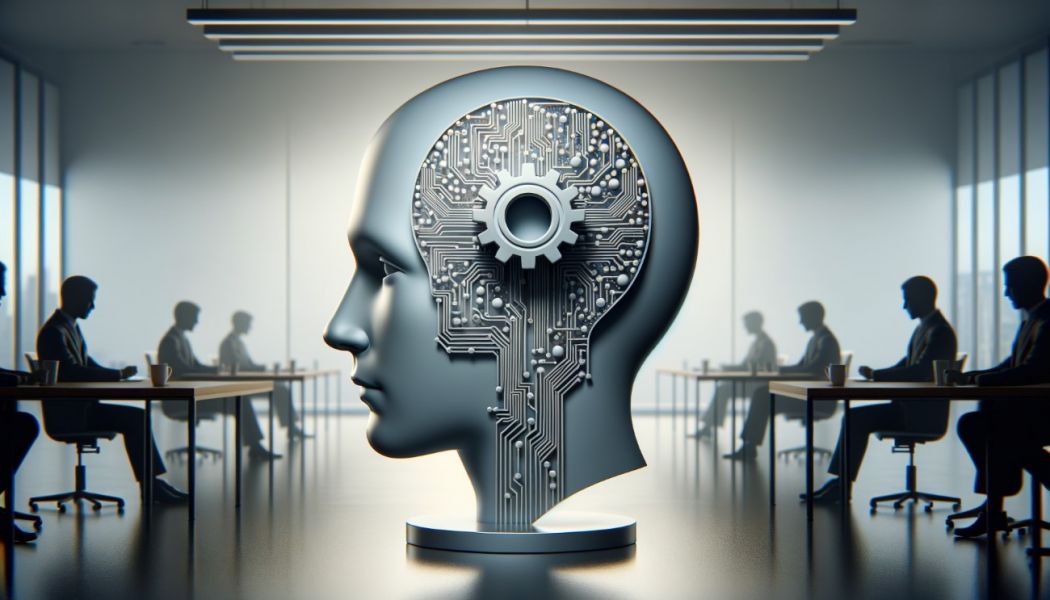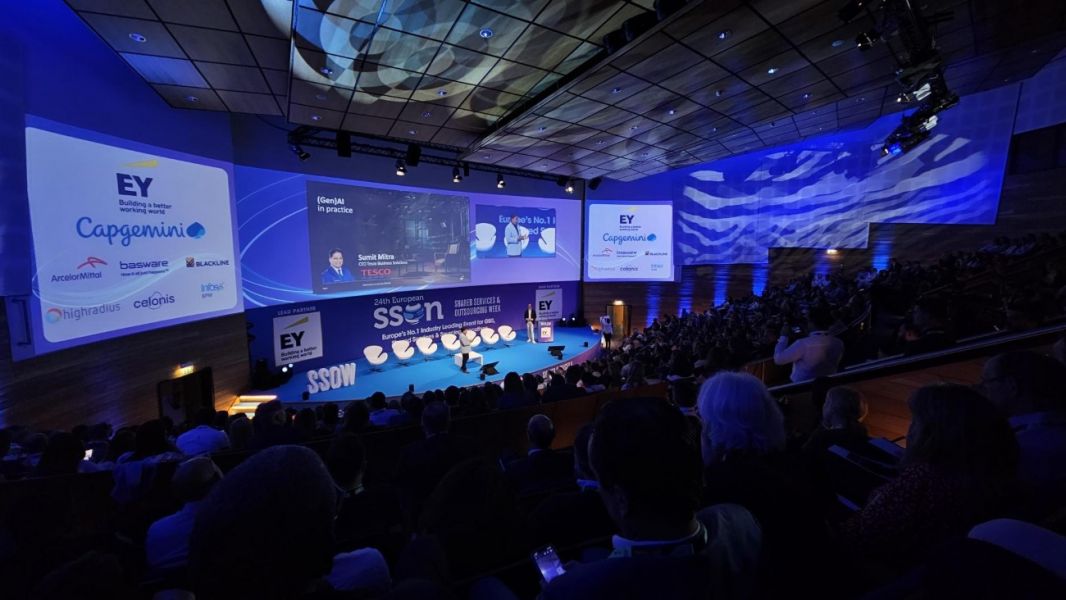A synergy between humans and machines or what the future holds for SSC and GBS organizations
Technological revolution is currently taking place in the business services sector. Why is implementing cutting-edge solutions in the best interest of SSC/GBS centers and how can AI transform the way of working within these organizations? We talk to Paweł Płocki, Head of TRUMPF Shared Services Center.
Wiktor Doktór, Pro Progressio: The last time we spoke you said that the wave of pioneering technologies in the business services sector ‘was not too revolutionary’. What is it like right now? RPA and AI in shared service centers – are these issues still on the fringes of the debate or are they more important now?
Paweł Płocki, TRUMPF Shared Services Center: Let me begin by explaining what I had in mind when I mentioned the ‘limited revolutionary potential’ of the previous technological wave that brought us RPA solutions. The reality, particularly in light of forecasts and expectations, had, in my opinion, left us wanting more. People in management positions often followed the narrative of technology providers (and others), purchased multiple licenses, and only after that it transpired that processes in use at the time were either not ready for what’s coming or – by their very nature and design – were not suitable for RPA-type automation. Banking and insurance are two notable exceptions because these two sectors have implemented RPA technology most effectively. Automation as such consistently ranks very high on every priority list. That, in itself, seems quite obvious, however the tools go far beyond RPA/AI.
Of course, we have VBA – which seems to be a "you either love it or hate it" kind of tool – then there are the Power Apps, and a whole host of various RPA-type solutions which come as open source and are smaller in scope. Finally, there are the low-code / no-code solutions. That’s why I suggest discussing the importance of automation separately from the discussion regarding specific types of tools, in particular since the proliferation of Generative AI happening right now has opened up completely new avenues.
A good example is the rise of low- code / no-code platforms and tools which seem fairly ubiquitous now and enable the development of many micro-solutions and applications by the users, also known as Citizen Developers. This does carry certain risks that companies must address and manage – like the ever-present GDPR – but, as far as the concept is concerned, the rising popularity of such solutions has resulted in changes which would have been unprecedented just a few years ago. Of course, I cannot ignore GenAI in this regard, and that’s for two reasons I would like to discuss next.
First of all, GenAI lends itself perfectly to seamless integration with no-code / low-code environments, thus significantly expanding the range of possible applications. Secondly, with AI anyone can go a step further than no-code / low-code and build a genuine app on their own; or, should I say, in close cooperation with AI and YouTube. Just take me as an example – until November 2022 I have not seen a single line of code and now, using available tools and displaying patience I didn’t even know I possess, I am building my very own, simple AI-based applications. I'm curious what will happen next, particularly given that developing small things independently, for your own needs, and on a tiny scale is now so much easier than was the case even very recently. Having said that, I guess our employees are either already developing similar apps or will start doing so soon, regardless of whether we as a company move forward with AI.

What is automated or robotized most often within SSC/GBS centers? What AI-based technologies are currently in use at GBS/SSC hubs?
Automation and robotization, in my opinion, should be looked at through the lenses of the opportunities and challenges ahead of us rather than by discussing what has already been done.
Let’s take a look at process documentation, which has been and remains a pain point for many organizations. Traditional documentation methods, while irreplaceable in certain situations, may disrupt operational dynamics and thus hinder access to knowledge. Technology such as AI means we are now able to revolutionize this area and automate both creation as well as access to documentation. Let's imagine intelligent systems that semi-automatically document our processes and then, relying on AI support, facilitate access to this knowledge, thus contributing to a work culture based on knowledge and continuous improvement. What I mean by the above are systems that enable querying the entire database within a few seconds about any topic that has ever been documented. Instead of painstakingly searching through documentation and looking for a specific issue we could simply ask a straightforward question and get an answer together with information about its’ source.
Chatbots designed to ‘talk to’ databases, PDFs, YouTube videos, .csv files, etc. are a case in point. You can vectorize – i.e. replace human-readable words with machine-readable digits – any source and within 30 minutes develop a bot which will query this source.
AI and related technologies may seem a bit futuristic at the moment but its capabilities are well illustrated by what is known as the Amara's law. Defined by Roy Charles Amara, American scientist and futurologist, this principle speaks of our tendency to overestimate the impact of technology in the short term, while underestimating it in the long term. And while we may now be skeptical about AI's capacity to change our world in the foreseeable future, the truth is that these changes are already happening – often in ways that may go unnoticed at first glance.
I would like to use this opportunity to emphasize that technologies such as AI are not a one-size-fits-all type of solution for issues faced by SSC/GBS hubs. However, they certainly represent an important tool that can and should be used to transform and improve processes. We should not lose sight of another aspect which is that, at the end of the day, technology is only a tool and it’s the people, their creativity, and adaptability that are key to true innovation and operational excellence. Properly implemented and adopted by teams, AI-based technologies will improve efficiency, but also become a catalyst for cultural change, shifting SSC/GBS centers towards a more flexible, adaptive, and innovative operating model.
Why should SSC/GBS centers be particularly interested in implementing AI-based solutions? How is AI going to improve work in such centers?
I view SSC and GBS centers as unique links present in every organization's structure, combining extensive process knowledge, access to a wide range of data, and deep business and technical understanding. Their role as innovation drivers – rather than mere supporters – is often underestimated. So why should AI become one of the key players for them?
The reason is actually extremely straightforward: competitive advantage. In a world where data is the new gold, organization’s capacity to effectively process, analyze, and use data becomes very important. With a genuine treasure trove of data at each SSC/GBS center, these hubs may utilize AI on their journey to transform such data into valuable, real-time insights that drive strategic decisions at the corporate level.
Suppose we're talking about predicting customer behavior, optimizing the supply chain, or even predicting future market trends. AI can help analyze data and provide insights that enable organizations to stay one step ahead of the competition. In turn, SSCs that integrate such solutions will offer services of significantly higher quality and act as innovation centers within a company landscape.
However, we cannot afford to ignore people, who – as is quite often the case – are the key element here. Technology and people are not fighting one another; they can coexist and complement each other as long as it’s carefully designed to be so. When implemented properly, AI can free employees from routine, repetitive tasks, thus allowing them more time for creative thinking and innovation. In turn, employees can ‘train’ AI by providing it with relevant data and information that will feed into process optimization.
This is where another interesting issue comes into play. How, if at all, should organizations look into the issue of ‘digitizing’ their experts? What I mean by this is the process of training AI models by specialists in specific areas so that such models can work together with humans at first, and ultimately perform that work independently of human supervision. I’m aware that this is a very contentious issue – however, it is also fascinating and, in my opinion, we can’t keep looking the other way.
The vision of synergy between man and machine in SSC/GBS centers may be the way forward when devising future work environment – one where technology will enable people to focus on more valuable, strategic initiatives. Embracing this approach will put SSC/GBS centers on the forefront of innovation and strategic business partnership, amplifying their added value to levels previously unseen.
Finally, please shed some more light on the biggest challenges and obstacles faced by GBS hubs when implementing RPA and/or AI.
Undoubtedly, RPA and AI implementation in GBS centers is a process that,despite boasting a number of benefits, brings certain unique challenges and obstacles to the table. One of them is the issue of competence. The complexity and specificity of these technologies require both technical knowledge as well as business acumen to properly identify and optimize processes ripe for automation and AI application. In addition, awareness of GenAI is not at the highest levels at the moment. Companies lack a good understanding of what this technology is capable of and what its limitations are.
Among the main challenges and areas requiring special attention is change management and employee acceptance. Introduction of new technologies is often met with employee resistance who harbor fears that automation will render them disposable or minimize their value within the organization. It is therefore crucial to properly communicate and conduct trainings that help teams understand the bene fits of AI and RPA as well as how these technologies can facilitate daily work, thus ensuring a smoother transformation and raising acceptance levels among employees.
Moreover, as we dive deeper into AI, and Generative AI in particular, we encounter a new set of challenges that concern not only technical but also legal aspects. Uncertainties surrounding intellectual property and data protection are among the hottest and most debated issues in the wider context of AI implementation. As the technology evolves, the legal framework will also need to adapt, in order to ensure appropriate protection. Interestingly, Europe seems to be moving towards a more restrictive set of regulations, while Japan is definitely more libertarian in their approach.
We can’t overlook challenges and problems – often non-standard and complex – concerning AI integration with existing systems. Many organizations use a variety of IT systems, and integrating new technologies such as AI and RPA often proves to be difficult and expensive, both in money terms as well as human resources required. Understanding existing systems, technology infrastructure, and data that is stored and processed within them is key to ensuring effective AI and RPA implementation.
Equally significant is the “black box” of language models, which is the core of many AI solutions. This metaphor represents the lack of transparency and understanding regarding how exactly these models generate their responses. Scientific studies and research continue to shed new light on models, often revealing previously unknown characteristics or ‘behaviors’ that are exciting and slightly disturbing at the same time.
A recent research into how these models "behave" or "react" when given space to "think" before producing answers is fascinating. The same can be said about deliberations on how to limit what is known as model hallucinations – i.e. producing answers that are completely untrue or nonsensical – or how to work with database-based language models in the most effective manner that produces precise answers. The last area is slowly becoming a separate field in itself, particularly when examining the numerous developments happening in this area and the frequency with which previously applied methods are becoming obsolete.
In summary, the challenges faced by GBS organizations when implementing RPA and AI are both complex and multi-faceted, covering both technical and human aspects. While the potential upside of these technologies is enormous, the ability to fully utilize their capabilities is often hampered by obstacles such as lack of expertise, employee resistance, as well as legal and technical issues. Of course, the technology itself matters, but it’s also about the way it is implemented, understood, and adopted by employees, and the way it is managed in the context of constant technological evolution. It is therefore crucial to remember that the real value of AI and RPA lies not only in the technology, but also in the people who use it and in the processes that are supported and improved by it.
Artificial Intelligence is here to help, rather than replace. AI stands for Amplified Intelligence – a statement already made but one which I believe is worth repeating.
Thank you for a truly inspiring conversation.
Photos: Ewelina Szindler.
This article comes from magazine:
FOCUS ON Business #13 November-December (6/2023)
 Check the issue
Check the issue








